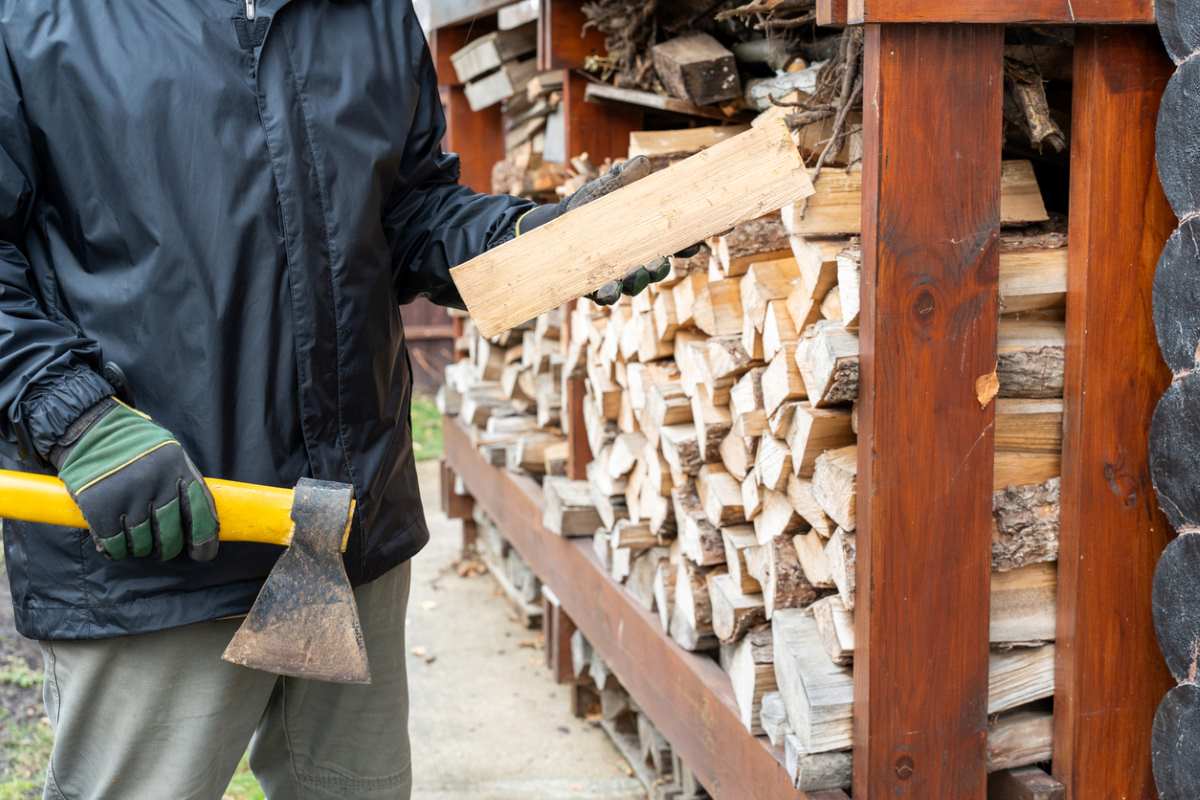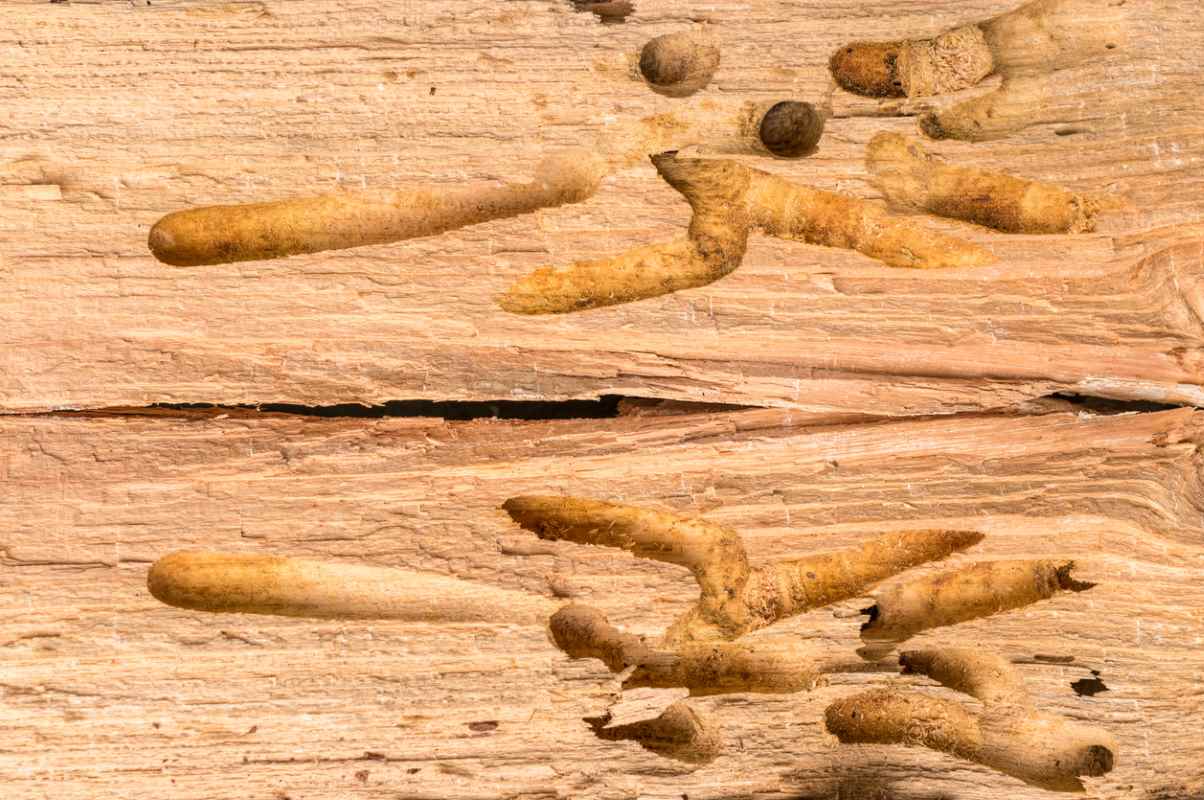 Even with the drop in temperatures in the winter months, several pests remain active and seek shelter to ride out the cold. One way pests find their way into your home is by hitching rides on improperly stored firewood near your house.
Even with the drop in temperatures in the winter months, several pests remain active and seek shelter to ride out the cold. One way pests find their way into your home is by hitching rides on improperly stored firewood near your house.
You have the power to identify potential problems, use preventive measures, and contact professional help to help keep your home free from winter pests hiding inside your firewood. Allow our Clegg’s Pest Control team to show how improper firewood storage attracts termites and other winter pests and share practical winter pest control tips.
What Attracts Termites?
Before you can think about removing your firewood pest problem, it’s best to know what brings them in the first place. No firewood pest is more notorious than termites. Although termites are attracted to several things, such as moisture and various other debris, firewood is the most surefire way for termites to make their attack on your place.
Why Do Termites Eat Wood?
The diet that termites live on consists of plant material with cellulose. One of the most common plant materials that has cellulose is wood. Although cellulose is indigestible to most animals, termites have certain microscopic organisms in their digestive tract, enabling them to munch away on wood.
Are Termites Active in the Winter?
The short answer to if termites are active in the winter is yes. However, their behavior changes as the snow begins to fall. Some species, such as subterranean termites, dig deeper into the ground or forage in deeper tunnels to stay warm.
However, these deeper tunnels mean more extensive burrows in your home. This ability to wreak havoc makes termite prevention necessary for winter pest prevention.
What Other Winter Pests Are Attracted to Wood?

While termites are among the most noteworthy pests to leech onto your firewood this winter, they are not alone. There are plenty of other hitchhiking pests to be weary of when it comes to winter pest prevention. Allow us to share two other firewood pests to look out for this winter.
Ants
One common firewood pest that can make its mark this winter is carpenter ants. These pesky creatures are small at around half an inch as adults and are usually black-bodied with antennas and narrow waists. Unlike termites, they don’t eat the wood but carve out holes to take shelter. The destruction carpenter ants can cause to your house is devastating.
Wood-Boring Beetles
An additional standard firewood pest found throughout North Carolina is wood-boring beetles. There are several types of wood-boring beetles ranging in size and shape. The damage they cause to your home’s wooden structure is a particular cause for concern. Feasting on hardwood floors, interior trim, and support, wood-boring beetles are far from picky eaters and can make your home insecure.
Outdoor Firewood Storage Tips for Termite Prevention
Whether trying to prevent an ant problem or eradicate termites, one great place to start for pest prevention and removal is with your firewood. Proper firewood storage goes a long way in keeping invasive pests off your firewood and out of the house. Here are some essential tips for storing your firewood properly this winter.
1. Store It in a Dry Place
When you choose where to keep your firewood, make it a dry place away from the house. We recommend a spot away from plants or trees to prevent pests from hopping on. Avoid storing your firewood indoors on the off-chance pests are already present.
2. Keep Firewood off the Ground
One more good storage tip is to keep all firewood off the ground. This helps prevent pests from discovering your wood and helps prevent moisture from coming in contact with it. We recommend you use a designated firewood rack to make the process easier.
3. Cover It When Needed
Another great way to prevent winter firewood pests is to use a firewood tarp. Doing so can shield your wood from any nearby pests trying to leap their way onto your wood. Make sure you purchase a tarp large enough to cover your wood but not large enough to hit the ground, which can make it a ladder for pests to climb.
4. Bring in Firewood Only for Immediate Use
To avoid excessive indoor firewood, only bring in select pieces of wood when you need it for immediate use. Examples of immediate use include when you’re lighting the fireplace and wood-fired stoves. Once you’ve used your wood, return all remaining pieces to the rack outdoors.
5. Utilize Insect Deterrents
Take advantage of various insect deterrents and repellents to protect against firewood pests. Adequate use of repellents kills pests already on your wood and prevents any further issues from popping up. Follow the instructions provided by each product’s label for safe and proper use.
Remember that these repellents are not a replacement for the effectiveness of professional pest control services.
Prevent Firewood Pests This Winter With Clegg’s Pest Control
To receive the best winter pest control that North Carolina has to offer, look no further than Clegg’s Pest Control. Our professional and knowledgeable technicians will thoroughly inspect your home and use specially tailored treatment plans to clear out firewood pests. Schedule your free North Carolina winter pest control inspection by contacting our team or find your nearest Clegg’s Pest Control service branch office now!
